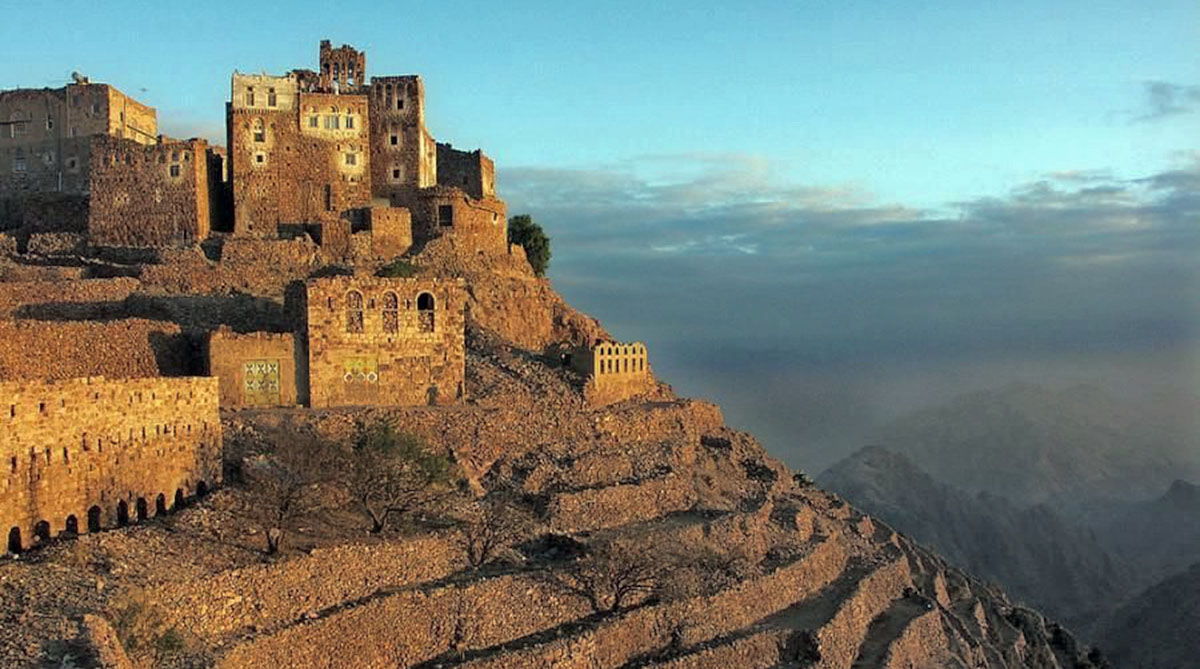Hootoksi Tyabji
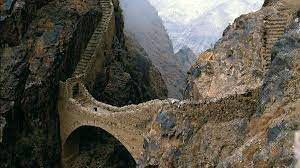 Leafing through a photobook on Yemen soon after we first arrived there, I came across a breath-taking photograph of a stone bridge. It was built across two mountains, connecting one to the other. I found it hard to believe that it was built in the 17th century by hand, stone by stone, what an amazing architectural feat. I thought to myself that if there was only one place, I was able to visit in Yemen, it would be this bridge in Shahara!
Leafing through a photobook on Yemen soon after we first arrived there, I came across a breath-taking photograph of a stone bridge. It was built across two mountains, connecting one to the other. I found it hard to believe that it was built in the 17th century by hand, stone by stone, what an amazing architectural feat. I thought to myself that if there was only one place, I was able to visit in Yemen, it would be this bridge in Shahara!
I began asking around about the possibility of traveling to Shahara and I repeatedly received responses such as this one. “Shahara? forget going there, it is impossible to get to it. There are no proper roads and the path that does go up there is very steep, strewn with boulders and impossible to drive on. By some stroke of luck if you do manage to get up, there is nowhere to stay and the people in the village are hostile to foreigners and sometimes throw stones at them.” This was certainly no recommendation for a visit, but the photo kept beckoning and I hoped that one day I would be able to see this amazing bridge for myself.
Almost two years later, Rob casually mentioned that he was going on an Immunization campaign to Shahara and would also visit a newly built health Center there. He would be travelling with officials from the Ministry of Health and with members of the press who were covering this difficult initiative to one of the least accessible parts of Yemen.
I managed to cajole Robert into letting me travel with him and promised to keep out of his way and to myself. He explained that the villages we would visit were remote, and the communities living there were primitive and sheltered. Segregation of the sexes was practiced in all aspects of life and none of the girls went to school in Shahara. Justice was dispensed by an Islamic code used differently in each village. The central government and its policies were just about tolerated.
See map.
We traveled to Shahara in a convoy of three cars. In the first were the TV and health education crews with all their equipment, the second carried the governor of Hajjah (a neighbouring Governorate) and his entourage, and we rode in the third car with our UNICEF driver Abdul Rab and Ahmed Said Zayeed, the director of Immunization services in Sana’a.
The first leg of the journey North, from Sana'a to Hajjah was an easy two-hour drive along good mountain roads.
Our first lunch at the Governors residence was a memorable Yemeni experience. I was thankful to Rob who advised me to grab the food as soon as it arrived or else it would be gone, and I would have to go without.
We all trooped into this large room and quietly sat cross-legged on the floor in a circle, I was the only woman among 20 or so men. The food arrived quickly and was brought out on large aluminum platters which were placed in the center of the circle in front of us all.
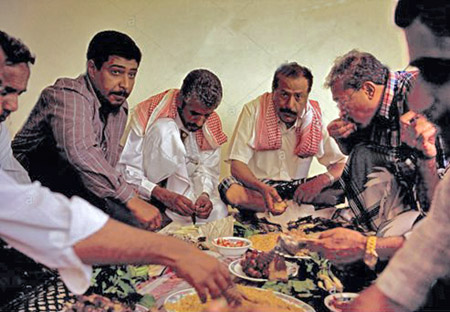 As soon as it was put down, the men began to grab at the food, tearing at hunks of meat that sloshed around in a bowl of soup. Some of it still had hair on it and this was guzzled with much relish judging from the slurps and burps which accompanied the eating. Along with the meat were other bubbling delicacies that were quickly devoured by scooping them onto a piece of delicious roasted bread (khubs).
As soon as it was put down, the men began to grab at the food, tearing at hunks of meat that sloshed around in a bowl of soup. Some of it still had hair on it and this was guzzled with much relish judging from the slurps and burps which accompanied the eating. Along with the meat were other bubbling delicacies that were quickly devoured by scooping them onto a piece of delicious roasted bread (khubs).
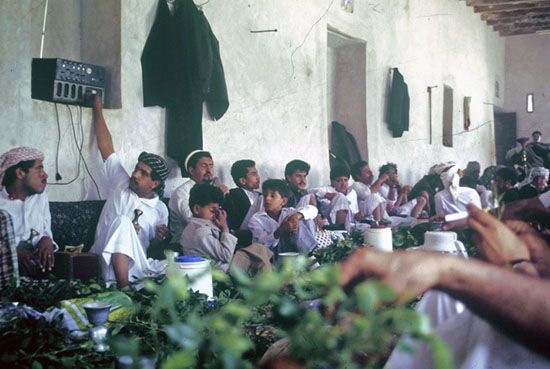 Everybody fell over everybody else as they tried to reach for what they wanted, and they licked the gravy that trickled down their arms with total abandon! Eating was a serious business and not much conversation took place during this activity. When it was done, the men retired to the mafraj room where meetings were conducted amidst the euphoric haze of the heavenly qat leaf (pic, right). I was politely ushered into a car and sent off to see the sights of Hajjah town.
Everybody fell over everybody else as they tried to reach for what they wanted, and they licked the gravy that trickled down their arms with total abandon! Eating was a serious business and not much conversation took place during this activity. When it was done, the men retired to the mafraj room where meetings were conducted amidst the euphoric haze of the heavenly qat leaf (pic, right). I was politely ushered into a car and sent off to see the sights of Hajjah town.
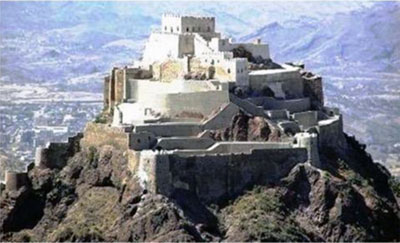 Hajjah is 127 Kms North West of Sana’a and sits at an altitude of 1800 meters. It is a large town dominated by the Al Qahera fort (pic, left) that was the seat of the Imams before they were overthrown by the Republican Revolution of 1962. It is also where the first traffic light in Yemen was installed. I walked around the fort area and visited a local market and then it was time to get back to the hotel where we were spending the night.
Hajjah is 127 Kms North West of Sana’a and sits at an altitude of 1800 meters. It is a large town dominated by the Al Qahera fort (pic, left) that was the seat of the Imams before they were overthrown by the Republican Revolution of 1962. It is also where the first traffic light in Yemen was installed. I walked around the fort area and visited a local market and then it was time to get back to the hotel where we were spending the night.
The next morning, we climbed into our three Toyota Land Cruisers and began the drive towards Shahara.
On the way we stopped at three villages where Immunization campaigns were on going and the team took notes and interviewed community leaders. It is incredible how communities survive and flourish in such harsh and hostile conditions. Many of the villages had no piped water supply and the access roads were rugged and usually built by the communities themselves with security in mind.

Everywhere we stopped there was the customary drinking of coca cola, the shaking of hands and a pledge of support for future Immunization campaigns. People were delighted with the communication materials that Robert and Dr. Ahmed Al-Hamly's team had developed. Posters, flipcharts, videos and simple books that answered questions on Immunization with pictures and text. Despite the harsh terrain and difficult living conditions, most communities appeared wealthy because of remittances made from relatives working in other parts of Arabia. So, even in places where there was no electricity, there were generators and TV coverage was wide spread.
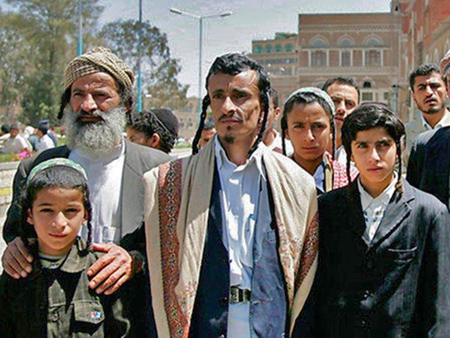 Driving along, we stopped at Rad, the stronghold of a small Jewish community in Yemen. While looking different because of their hairstyles, the Jewish people were completely integrated with their Muslim neighbours.
Driving along, we stopped at Rad, the stronghold of a small Jewish community in Yemen. While looking different because of their hairstyles, the Jewish people were completely integrated with their Muslim neighbours.
By late afternoon we had reached the base of the mountain and from there we began the drive to the top, a most memorable journey and one that I will never forget!
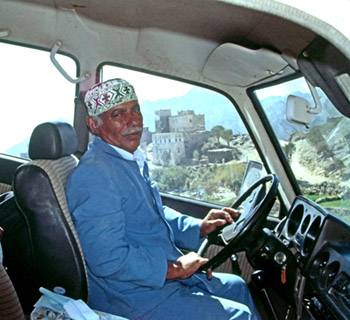
Abdul Rab was a very skillful driver, and we were in a sturdy vehicle in top condition. It took us five hours of slow driving up narrow “roads” that were incredibly steep and strewn with huge boulders and rocks, often with sheer drops on either side. Sitting on the edge of the car seat with my neck straining, I had my eyes tightly shut most of that time, suppressing the scream rising in my throat! I said many a last prayer and imagined how it would feel to be inside a car and hurtling down hundreds of feet to my death! Abdul Rab's knuckles were white on the wheel, Ahmed Said was deathly calm, and Rob kept saying "wow, what a picture" and "Toyota Gool!" which means long live Toyota! in Somali. Every time I did open my eyes the scene before me was breathtaking, but I quickly shut them tight again until we reached the top.
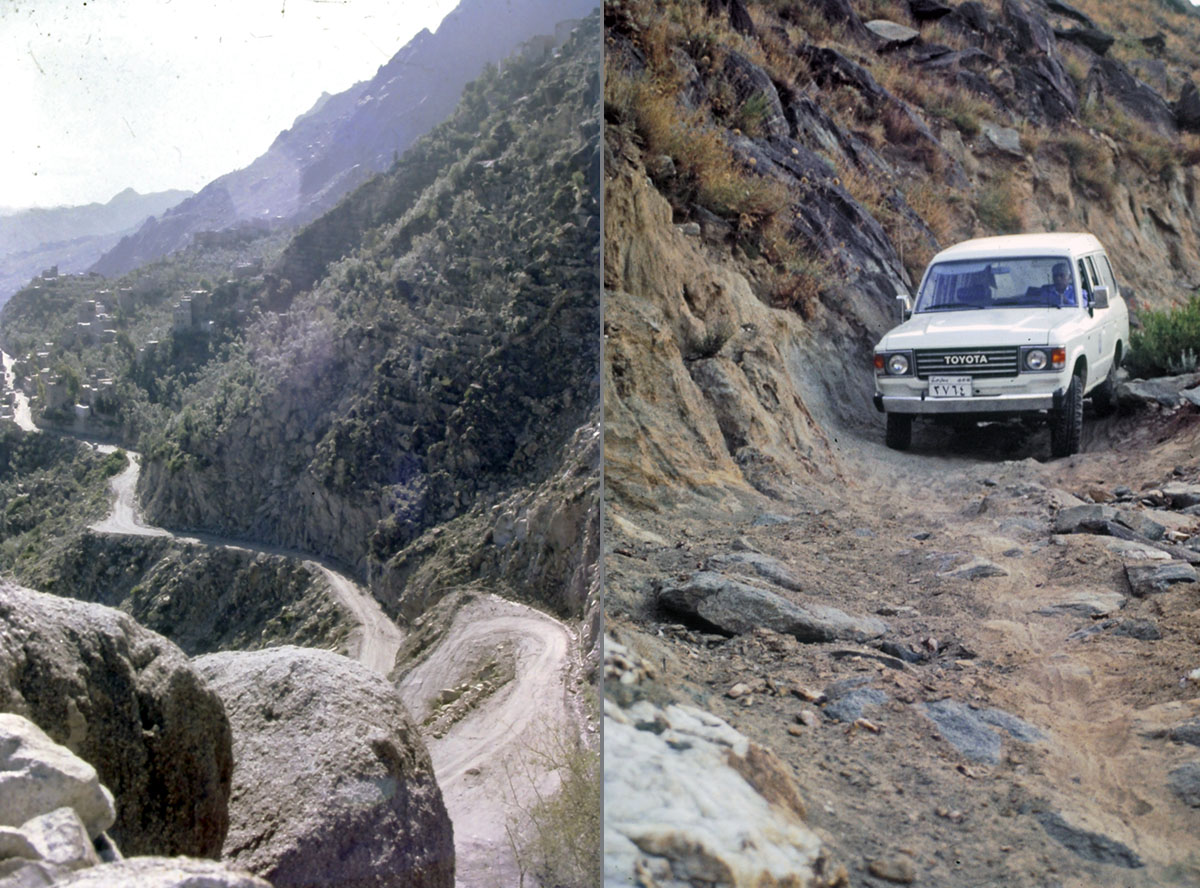
There was a welcoming committee waiting for us and I was whisked off to a room and placed in solitary confinement, while the men had their meetings. Once these were over, we were proudly escorted to the funduk (local rest-house) for dinner. This building like all the other houses in the area, was built of stone but was broader than the tall, tower-like structures seen elsewhere in the country. The feast we were served was terrific and with our stomachs full to bursting we were ushered back down the hill to the health-care center where arrangements were made for us to spend the night. There was no other place available in all Shahara for us to sleep. Being the only woman, I was put in a room with an Italian blanket and three empty beds while Rob slept with the rest of the men in another ward. Fortunately, there were no patients at the health center, and if there were, I certainly hope they were not booted out to make place for us!
After a good night’s rest and no nightmares of our drive up the mountain, we woke up early and made a bee line for the one loo, a hole in the ground! With our bladders empty and the excitement of finally seeing the Shahara bridge mounting, we started walking towards it and a few minutes later, there it was in front of us!
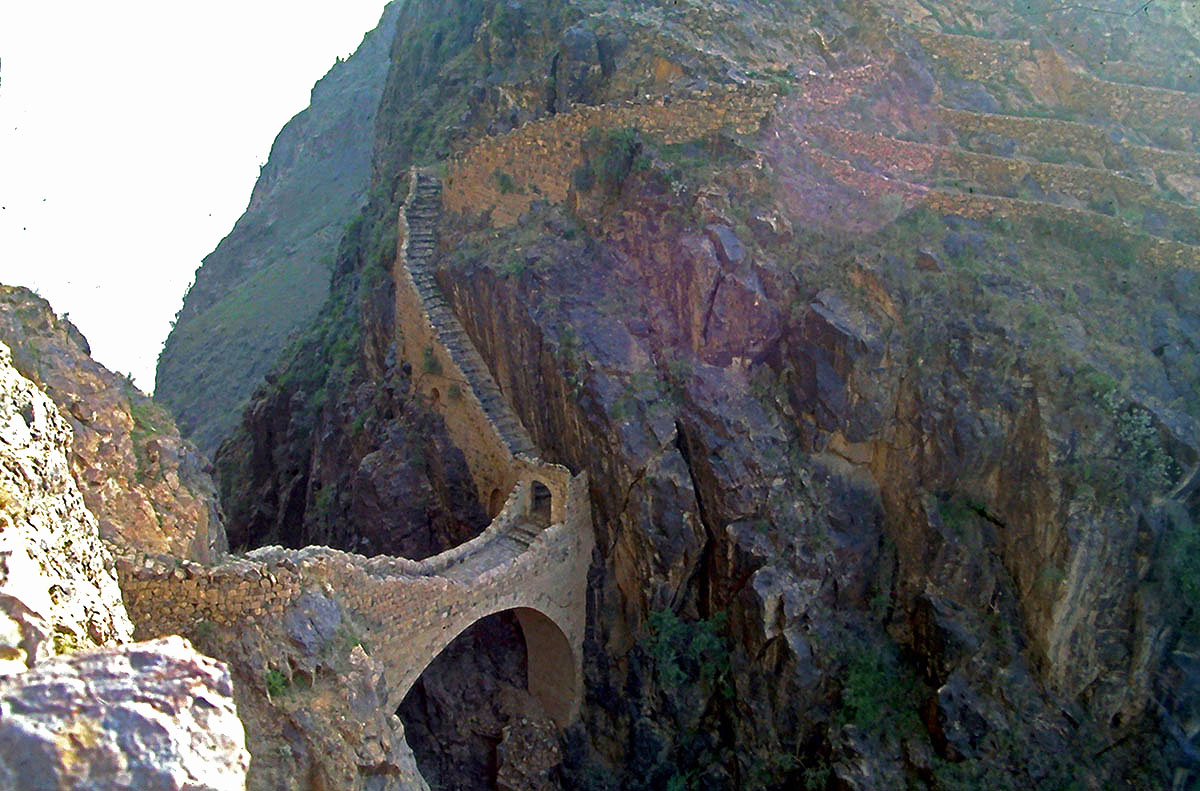
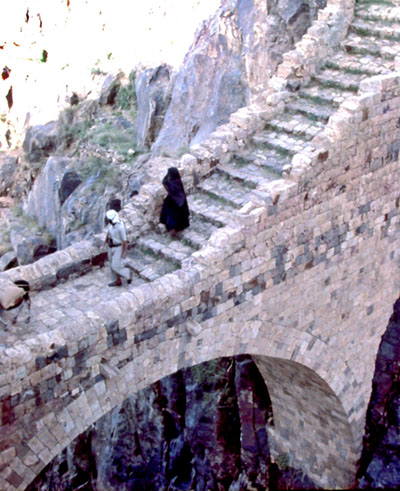 The vista before us was utterly stunning and awe inspiring. The bridge is built across two mountains at an altitude of 300 m. and many of the men who built it, were killed while they worked on it. The construction began in the 17th century at the cost of 100,000 French riyals (a fortune in those days) and it took three years to complete. It is 20 meters (65 feet) long and 3 meters (9 feet) wide making it the only easily accessible point of entry to Shaharah. It suspends 200 meters (656 feet) above the gorge, a caveat for people with acrophobia - Denzil Griffiths.
The vista before us was utterly stunning and awe inspiring. The bridge is built across two mountains at an altitude of 300 m. and many of the men who built it, were killed while they worked on it. The construction began in the 17th century at the cost of 100,000 French riyals (a fortune in those days) and it took three years to complete. It is 20 meters (65 feet) long and 3 meters (9 feet) wide making it the only easily accessible point of entry to Shaharah. It suspends 200 meters (656 feet) above the gorge, a caveat for people with acrophobia - Denzil Griffiths.
We walked across it on steep steps puffing and panting all the way while a Yemeni woman completely veiled, crossed it effortlessly with her fully loaded donkey leading the way! I felt I was part of a Biblical scene on a Hollywood movie set!
Robert had to rush off to work, I stayed on to drink in the stunning landscape and take in every detail of this incredible building feat!
This ancient and secluded village of Shahara is located among rugged mountains at 2,600 meters and has only one point of entry, the “road” we came up on. There was no piped water but there were huge stone cisterns in one part of the village where rainwater was collected. It looked green and quite dirty, but women came with their containers to collect it. I saw pipes being installed for a new water-supply system which the village was eagerly awaiting.

Ambling along, I soon found myself surrounded by a group of young giggling girls. As none of us could speak the others language, I began playing games they seemed to be quite familiar with.
We played “Oranges and Lemons” “Ringa ringa roses” and Hopscotch! Every time I tried to escape, I was hauled back into the group and at some point, I found myself being led by the hand into one of their homes. I was welcomed by some older women who served me tea and invited other women to see me and before I knew it, half the village was sitting around the house watching me sip my tea.
Having exhausted my entire vocabulary of Arabic (10 or so words) which set them off into peals of laughter, I wondered what to do next; every time I tried to get up and leave, I was pulled back down again and served some more tea while everyone continued to stare at me in an atmosphere of friendly silence! That was when I decided to sing and that started the ball rolling and loosened us all up!
As I sang, everyone clapped and cheered and hooted and tooted and I was soon drowned out by their wonderful singing of Yemeni songs. The entire house was filled with women and girls dancing and singing with abandon! Someone brought out a bowl of henna and this was meticulously applied on me as I was made to sit and drink some more tea while the paste dried. They then scraped it off leaving me with beautiful henna designs on my hands and feet.
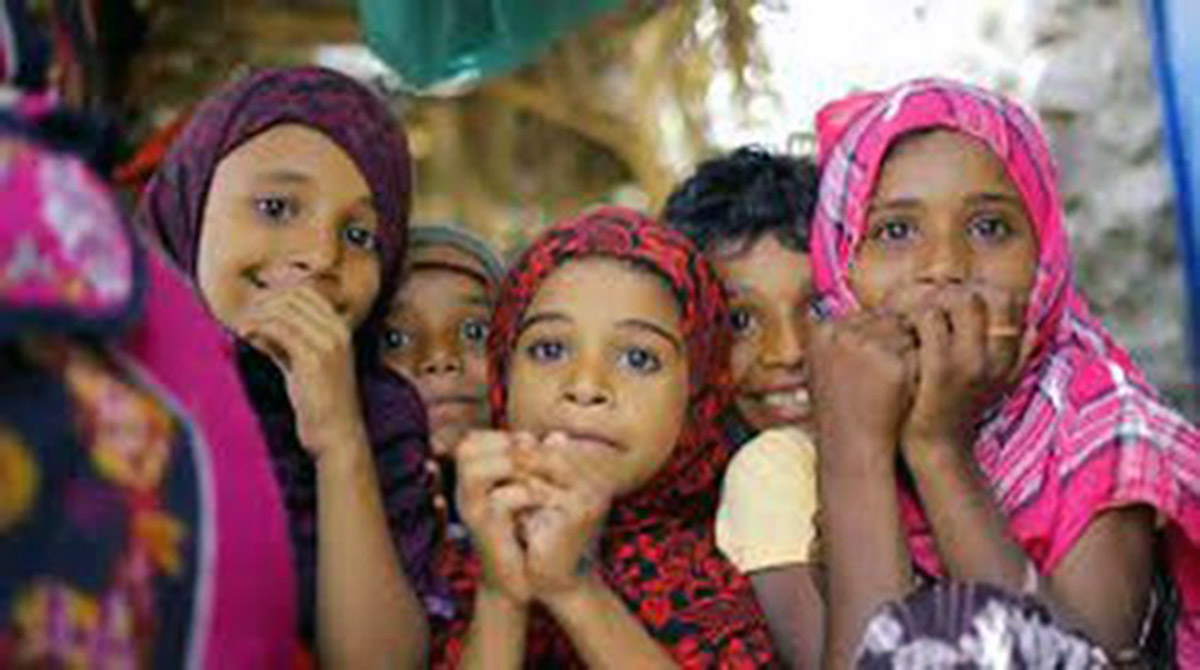
Suddenly someone shouted a warning, everyone disappeared, and I saw Robert climbing the stairs to the room I was in, he had come to tell me it was time for us to leave. One of the ladies had seen him approaching the house and she set off the alarm! As soon as he was out of sight again, the ladies returned, and we exchanged laughter and hugs and said our goodbyes.
A little girl hung on to my hand and refused to let go. At the car she said to Abdullah “please don’t take her away, she is our sister, and we want her to stay!” I was overwhelmed, gave her a hug and we were on our way.
What an amazing experience that was! We did not need words or language to communicate for we all spoke the language of music and love.
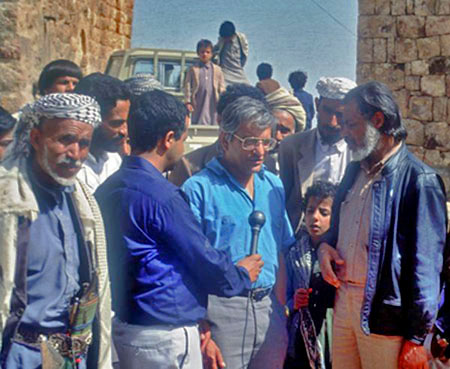 The next day we drove another 5 hours on torturous mountain “roads” till we got to another remote village where we were served lunch and I was left to wait in the room of someone’s house while Robert worked.
The next day we drove another 5 hours on torturous mountain “roads” till we got to another remote village where we were served lunch and I was left to wait in the room of someone’s house while Robert worked.
I sat on the floor gazing out at the stark mountains and replaying the scenes of the previous day when I heard giggles and saw many pairs of eyes staring at me from behind a curtain. It soon parted and out walked a large woman, while breast feeding the infant in her arms. I stood up to greet her and she clasped me to her ample bosom smothering the child between us and indicating that I should sit back down. Soon girls of various shapes and sizes emerged and sat on the floor around me, I counted ten!
They examined the newly painted henna on my hands and feet and after some chatter and giggles between them, I found myself being hauled to my feet! A Yemeni dress and veil were brought out and draped over my clothes amidst peals of laughter. Once they had me “dressed” I was made to stand in the middle of their circle while they danced around and clapped and sang!
It was soon time for me to leave and this time Robert knew better than to come searching for me. A woman envoy was dispatched to summon me outside.
As I got into the car Abdul Rab told me that the lady of the house I had been in was celebrating the birth of her 11th child, a son, the one she had been breast feeding when she greeted me. The 10 girls were her daughters!
Thanks to Robert who agreed to have me tag along while he was working, my wish to visit Shahara was fulfilled.
The journey, the ancient site, the amazing bridge, and the stark and intensely beautiful landscapes are etched in my memory.
The warmth and love showered upon me by the women and children of Shahara is a most treasured gift and a memory I will cherish forever.
